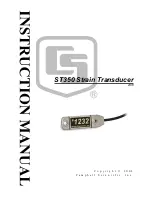
FCC ID: K6630163X3S
IC ID: 511B-30163X3S
Alignment
3/6
Vertex Standard Co,. Ltd.
(A) In CH70, every time you are in transmit mode, (every time you press PTT), the
following test tone can be outputted:
1st transmission: Synthetic tone of 1300 Hz and 2100 Hz
2nd transmission: 1300 Hz
3rd transmission: 2100 Hz
4th transmission: No modulation
5th transmission: Return to 1st transmission
(B) Scan the channels between WX10 and EXP04 in the SCAN mode.
Starting Test Mode
Confirm that
PWR
switch is off, and short the TEST points (JP1001). Turn on the
PWR
switch while press and holding the [
DISTRESS
] and [
DW
(
IC
)] keys on CPM25.
*Please connect a CMP25 with the “RAM2” connector.
Adjustment of VCO
Connect the DC voltmeter to the test point (LOCK TP).
Use
the
16/9
key to set the channel to
CH16
, adjust
TC1001
so that voltage on the
TP1005
is 1.5 V ±0.1 V in the receive mode.
Use
the
16/9
key to set the channel to
CH16
, adjust
TC1002
so that voltage on the
TP1008
is below 3.0 V ±0.1 V in the transmit mode.
Adjustment and Confirmation of Transmit Power
Adjust power at high and low in the transmit mode, and confirm power in the specified
bandwidth.
-- Adjustment --
Connect the wattmeter and 50-ohm dummy load to the antenna jack.
Use the [
H/L
(
NAV
)] key to set transceiver to
high power
and set the channel to
CH16
.
With the
PTT
switch pressed, adjust
VR1001
so that RF power is 25 W.
Use the [
H/L
(
NAV
)] key to set transceiver to
low power
and set the channel to
CH16
.
With the
PTT
switch pressed, adjust
VR1002
so that RF power is 0.8 W.
Adjustment of PLL Frequency
Adjust the frequency in the transmit mode and local frequency in the receive mode.
Setup the test equipment as shown below.
Set the channel to
CH16
. With the
PTT
switch pressed, adjust
TC1003
so that RF
frequency is 156.80000 MHz ± 100 Hz.
Adjustment and Confirmation of Deviation
Adjust deviation in the transmit mode.
























